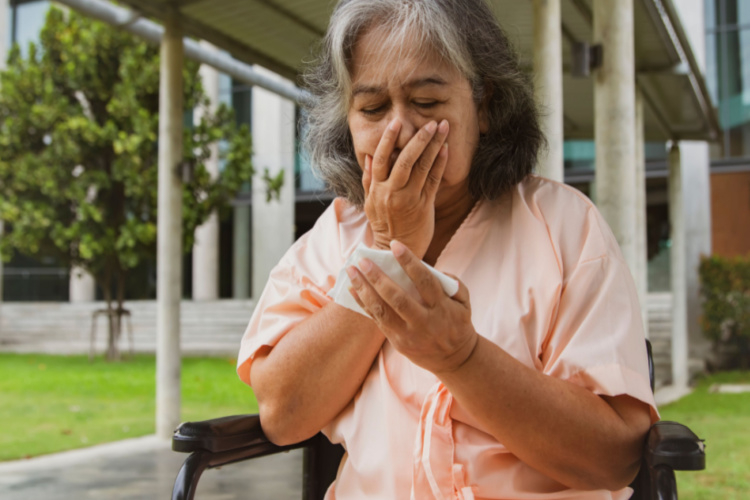World Lung Cancer Day: How to Know the Signs and Keep Yourself Healthy
August 1, 2022, is World Lung Cancer Day. Many of us have family members, friends, and loved ones who are affected by lung cancer. It’s important to know the signs of lung cancer and how we can keep ourselves healthy by creating proactive and intentional habits to lessen the likelihood of being diagnosed. Let’s check out how we can stay well and take care of our lung health.
World Lung Cancer Day: Who Is Affected and What Are the Causes?
First, let’s discuss what lung cancer is. The American Lung Association explains that lung cancer happens when cells in the lung change (or mutate). Most often, this is because of exposure to dangerous chemicals that we breathe. Anyone can get lung cancer, but those who are 65 years or older are most likely to be diagnosed.
Smoking is the most common cause and number one risk factor for lung cancer. About 90 percent of lung cancer comes from smoking, as the smoke from tobacco holds chemicals that are very dangerous to our health and lungs. Even if you are not a smoker yourself, breathing in secondhand smoke can also put you at risk for lung cancer.
While smoking is the most common cause, there are other factors that can also contribute to lung cancer, such as radon or other hazardous chemicals that you might ingest at work or from being outside; particle pollution, such as exhaust from a car, plane, etc.; and even your family’s genetics.
Lung cancer is very common—it’s the second most common cancer among men and women. In February 2022, the American Cancer Society reported about 236,740 new cases of lung cancer (117,910 in men and 118,830 in women). In addition to those cases, it’s noted that about 130,180 men and women died from lung cancer (68,820 in men and 61,360 in women).
The lung cancer survival rate is based on population averages, but typically, the lung cancer five-year survival rate is 18.6%. However, if it’s detected when the disease is still localized, the survival rate improves to around 56%.
With these numbers at a high rate, it’s crucial that we know the types of lung cancer, the symptoms, and what steps to take to lessen the chance of being diagnosed. So first, what are the different types of lung cancer, and how can you spot the symptoms?
Different Types of Lung Cancer and the Symptoms to Look Out For
Many people don’t know that there are different types of lung cancer. There are two main types of lung cancer: small cell lung cancer (SCLC) and non-small cell (NSCLC). Small cell lung cancer is more aggressive but is less common or likely for people to have, while non-small cell lung cancer is more common and makes up close to 80% of lung cancer cases.

It’s hard to know which one you might have unless you go to your primary care physician. If you’re noticing any of the following symptoms, it’s wise to set up an appointment, as these are common symptoms of lung cancer:
- Hoarseness
- Shortness of breath
- Feeling tired, fatigued, weak, or malaise
- Chest pain that is worsened with coughing or taking deep breaths
- A cough that becomes more and more consistent
- Loss of appetite
- Coughing up blood or phlegm (that is a rust-like color)
- Unexplained weight loss
- Wheezing
- Infections such as pneumonia or bronchitis that linger or keep coming back
It doesn’t mean you have cancer if you have any, or even multiple, of these symptoms. Try not to worry or diagnose yourself. But it is something to be mindful of, especially if the symptoms don’t get better or worsen. Record any symptoms that you have and alert your doctor if you feel like it’s getting serious.
Lung Cancer Treatment, How to Prevent Cancer, and Staying Hopeful
Treatments for people diagnosed with non-small cell lung cancer include surgery, chemotherapy, targeted therapy, radiation therapy, or even a combination of treatments, depending on the direction of your doctor.
Those with small cell lung cancer usually undergo surgery to remove the cancerous tissue or undergo radiation therapy and chemotherapy.

Receiving treatment can be difficult and leave many people feeling lonely, tired, discouraged, and overwhelmed. But keeping your friends and family close can help you feel supported and heard. Keeping these relationships close can help you lift your spirits on bad days.
There’s no sure way to prevent lung cancer, but if you’re looking for ways to stay healthy and lessen your chances, try the following: Cut back on smoking, try to avoid secondhand smoke, exercise, and have a balanced diet of vegetables, fruits, and essential nutrients.
If you or anyone you know has lung cancer, we’re rooting for you. Keep fighting and sharing how lung cancer can affect us. With more knowledge, we can help create healthier habits for ourselves to lessen the chances of getting cancer.








